#kadokawa corporation
Text
SHINONOME ABYSS: The Maiden Exorcist adds Switch version - Gematsu

Roguelike horror action game SHINONOME ABYSS: The Maiden Exorcist will be available for Switch alongside its previously announced PC (Steam) version when it launches this fall, publishers Kadokawa Corporation, Kadokawa Game Linkage, and ABC ANIMATION, and developer WODAN announced.
The companies also announced that Akiho Suzumoto will voice main character Yono, and that SHINONOME ABYSS: The Maiden Exorcist will be playable at Tokyo Game Show 2024, which will run from September 26 to 29 at Makuhari Messe in Chiba, Japan.

Here is an overview of the game, via its Steam page:
About
The main character is a shrine maiden named Yono, who has to survive in a haunted houses where Mononoke (yokai and vengeful spirits) lurk, using a limited number of items and traps in this strategy roguelike horror action game!
Shrine Maiden Yono Takes on the Challenge of Escaping From Numerous Haunted Houses in This Roguelike!
Following in the footsteps of her missing Onmyouji brother, shrine maiden Yono arrives at a terrifying place where Mononoke (yokai and other vengeful spirits) live. The very structure of the mansion changes every time you enter. There are three game modes: “Harai,” “Misogi,” and “Gyou,” with “Gyou” being the highest difficulty mode, in which players compete to see how long they can survive in an endless dungeon
The Goal is to Escape From the Haunted House and Defeat the Mononoke by Making Full Use of the Traps and Devices Hidden in the House!
First, confirm the type and number of Mononoke by listening to noises coming from the next room, finding traces of the Mononoke, etc. Try to surmise the fighting style of the Mononoke and defeat them by setting up traps and then calling them over to you by making noises so they fall in the traps you made. You can also try to understand the structure of the mansion and defeat the Mononoke by luring them into open fireplaces and pits. Defeating them in this way allows you to gain and save items as well. Survival here requires knowledge, experience, and courage. When Yono is in grave danger, another side of her personality appears, and she is greatly strengthened. Predicting and controlling this change is also a key to success.
Various Elements Have Been Greatly Improved from the Previous Game!
The game has been significantly improved from the previous Shinonome, with more Mononoke appearing, more traps and items, more dungeons and a big boss. The addition of Yono’s other personality is also a new element. Based on the player’s feedback from the previous game, the game content itself has also undergone tuning in order to make it easier to play.
Production Staff
Director / Game Designer: Kenichi Iwao
Major Works: Resident Evil, Einhander, Parasite Eve 2, Final Fantasy XI
Character Design: Tatsuya Yoshikawa
Major Works: Breath of Fire series, Devil May Cry 4 and 5, Last Ranker
Programming: Hiroshi Ogino
Major Works: Shiren the Wanderer: Mystery Dungeon, Fate/Grand Order, Culdcept Mobile
#SHINONOME ABYSS: The Maiden Exorcist#SHINONOME#SHINONOME ABYSS#Kadokawa Corporation#Kadokawa Game Linkage#ABC Animation#WODAN#roguelike#horror game#action game#Gematsu
4 notes
·
View notes
Photo
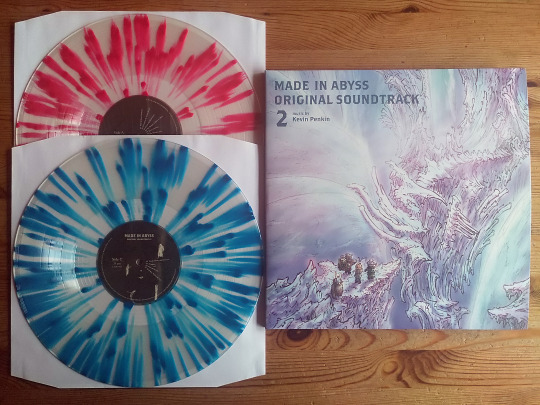
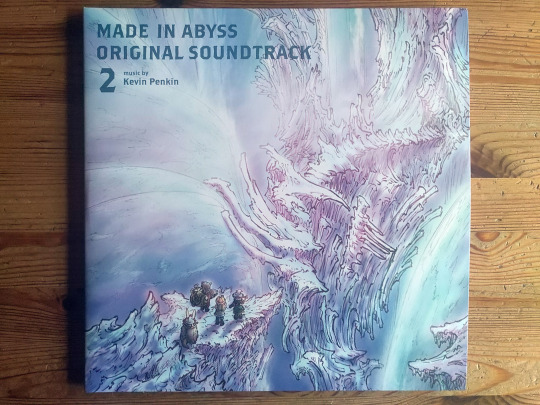


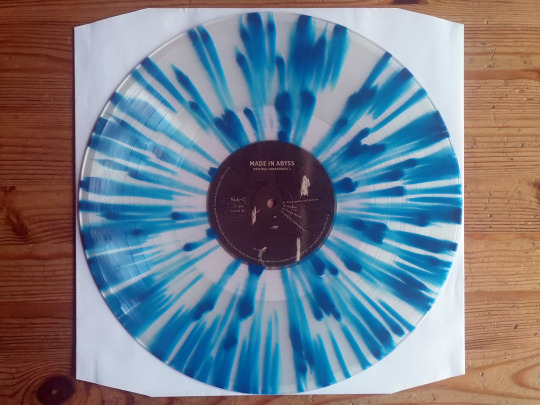
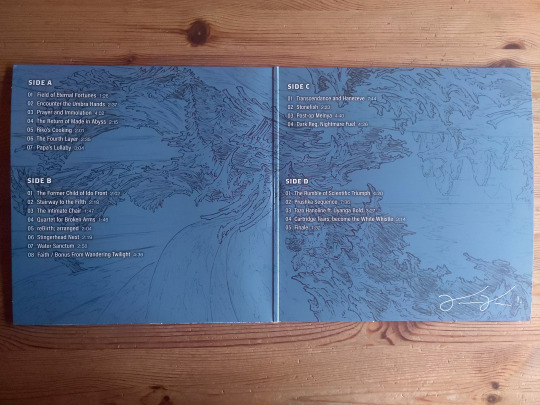

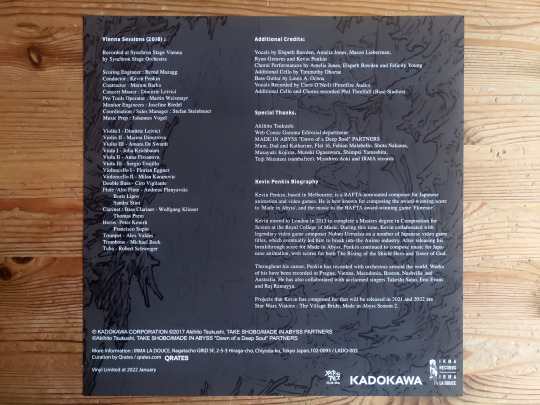
Kevin Penkin - Made In Abyss Original Soundtrack 2 -Dawn Of The Deep Soul- | Irma La Douce | 2022 | Clear with Red Splatter + Clear with Blue Splatter | /2393
#kevin penkin#made in abyss#dawn of the deep soul#irma la douce#vinyl#colored vinyl#lp#music#records#record collection#soundtrack#anime soundtrack#anime music#kinema citrus#kadokawa corporation#toshiki nishi#wataru osakabe#anime
18 notes
·
View notes
Text
Anime Expo 2023: Delicious in Dungeon Anime to Stream Worldwide on Netflix
Anime Expo 2023: Delicious in Dungeon Anime to Stream Worldwide on Netflix #anime #animeexpo #manga
On July 1st, 2023 KADOKAWA Corporation announced during the TRIGGER World Premiere at Anime Expo 2023 that the upcoming January 2024 anime, Delicious in Dungeon will stream on Netflix worldwide after its release.
Ahead of its premiere, a special Delicious in Dungeon exhibit is being featured at the KADOKAWA booth (South Hall 1206) at Anime Expo 2023. Kentaro Kumagai, the voice of Laios, and…

View On WordPress
2 notes
·
View notes
Text
Análise | Overtake!: Acreditar é tudo o que consigo fazer
O anime Overtake! chegou ao seu fina, entregando uma excelente história repleta de drama e corridas. Confira aqui:
#Overtake #anime #crunchyroll
No último domingo (17) chegou ao fim o anime de Fórmula 4, Overtake! se tornando uma das melhores experiência desta temporada e aqui está a nossa análise do anime.
Quando o anime estreou apresentamos as nossas primeiras impressões de Overtake!, que de início se mostrou um ótimo anime de esportes desta temporada. Apesar de ser um anime original, ou seja, sem um mangá usado como base, produzido…

View On WordPress
#Aldnoah.Zero#Análise | Overtake!: Acreditar é tudo o que consigo fazer#Ayumi Sekine#Belsorriso#Ei Aoki#Fórmula 4#Futoshi Komaki#Haruka Asahina#Kadokawa Corporation#Komaki Motors#Kotarou Komaki#Kouya Madoka#Overtake análise#Overteake!#Re:Creators#Saeko Yukihira#Satsuki Harunaga#Toshiki Tokumaru#Troyca
0 notes
Text
VIFF 2022 Review: Riverside Mukolitta (川っぺりムコリッタ)
VIFF 2022 Review: Riverside Mukolitta (川っぺりムコリッタ)
Riverside Mukolitta is the story of an unlikely bond between a young man who just lost his father and a group of strangers he encounters along the way who end up helping him in the end.
If you get tired of all the intense dramas during the film festival, Riverside Mukolitta may be the drama-comedy that you’ll want to see. It touches on a touchy subject, but makes light of it.
A train arrives in…
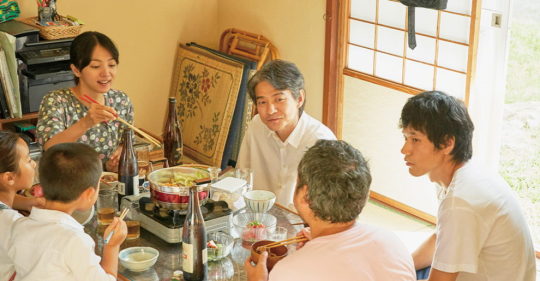
View On WordPress
#ムコリッタ#Hikari#Japan#Kadokawa Corporation#Ken&039;ichi#Matsuyama#Mitsushima#Mukolitta#Muro#Naoko#Ogigami#Riverside#Tsuyoshi#川っぺり#川っぺりムコリッタ
0 notes
Text
So at first, this was a reblog of a different post, but I am now making it an original one for greater reach. Be warned that it's going to be quite long.
So, we all know and love the promotional comics of our Wii boxers, like this one about Glass Joe:

You might have never questioned its origin, and neither did I when I first encountered it a year ago. I just assumed that Nintendo officially published it in a guide, because that's what every source about them that I've read was implying.
But then I learnt that these translations aren't official at all. They were apparently done by the Tumblr user @boink-the-joiner in 2013, whose blog seems to be unfortunately deleted.
And then I was informed of the existence of this image by my friend @fan-mans (Charlie):

He said he originally found it on Tumblr, though he didn't give me the link to where he got it from. (It happens to be included at the very start of this post.)
But this supposed "original version" seemed fishy to me for several reasons:
If this is the "original" Japanese version, and no "official" English one exists that was published alongside it, why are the sound effects written in the Latin alphabet?
Why is the authorship at the bottom in English? And isn't that the exact same font as in the well-known English version?
Why is it read left-to-right? Shouldn't it be flipped from the English version? Wouldn't it make more sense for Mac to punch him with his right arm and for Joe's hair to be more often on his right side than the left, and to first put on the left boxing glove, and hold the coffee cup in his right hand?
Why is there a red rectangle in the middle right?
Charlie said that all of this was because Nintendo was catering to an American audience, but never actually published the guide outside of Japan. (Apart from the red rectangle, which was apparently a part of the website that image originally came from, but he didn't have a link to that either.) I didn't believe it at first, because it just seemed like an incredibly stupid pair of decisions to me.
But today, I found this webpage. It's a blog post talking about strategy books for Nintendo games, and includes this image:

This is it! This is proof that Nintendo printed the comic to be read left to right in the original Japanese version!
There was that little bit of doubt in my mind though. What if the copy that shows the actual pages of the comic is in English? The quality is so low...

...but the kana here are clear enough.
That isn't the end of the story. Shortly afterwards, I came across this webpage:
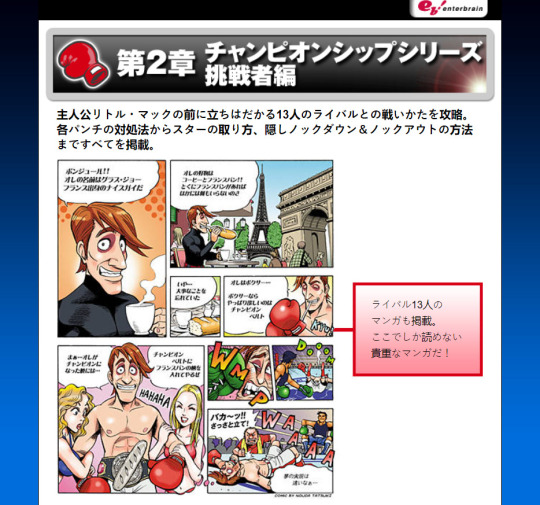
THIS IS THE ORIGIN OF THAT JAPANESE VERSION OF THE JOE COMIC ABOVE! The red rectangle was, indeed, holding up a textbox.
Anyway, the full website can be found here, and includes a few other materials, such as this part of a guide on Title Defense Von Kaiser:
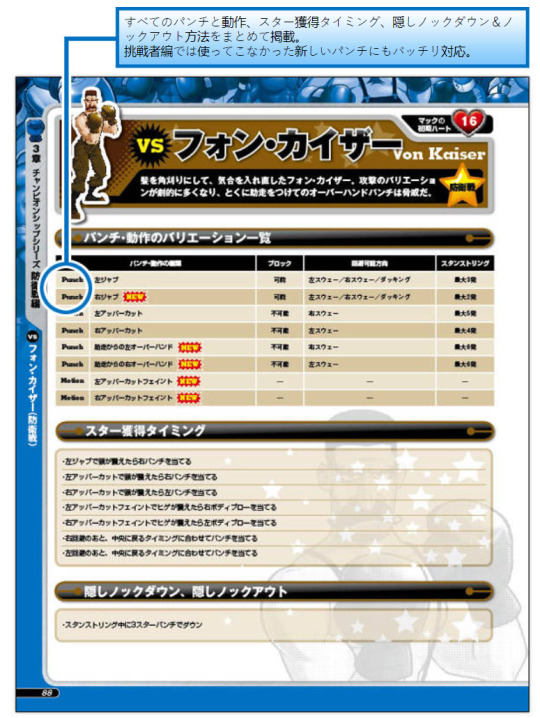
Sadly, the website only includes Joe's comic, and I haven't found the original Japanese versions of anyone else online, so currently, you'd have to own the guide to know what they look like.
Also, out of curiosity, I decided to use the Wayback Machine to see if the site has ever been modified, but it just wasn't archived there at all. Not even a single snapshot. So I went ahead and preserved what it currently looks like.
The website itself seems to belong to the company that published the guide, Enterbrain, a division of Kadokawa Future Publishing, which is a part of the Kadokawa Corporation. The names "Ebten" and "Famitsu" seem to be related to it as well, but I have yet to figure out exactly how. The full Japanese title of the book is パンチアウト!!完全クリアーガイドブック, and its ISBN is 978-4-7577-5067-8. At least according to these listings.
Not all questions about the comics have been answered. For instance, we still aren't quite sure why Nintendo (or Enterbrain, anyway) decided to flip them. And our translator Boink had to have the copies of all of the Japanese comics, otherwise they wouldn't have been able to translate them! What if they are reachable somewhere else, and we can ask them if they still have the original scans?
More information might come as I (and hopefully others) research more.

72 notes
·
View notes
Text
Kaiju Week in Review (November 20-26, 2022)
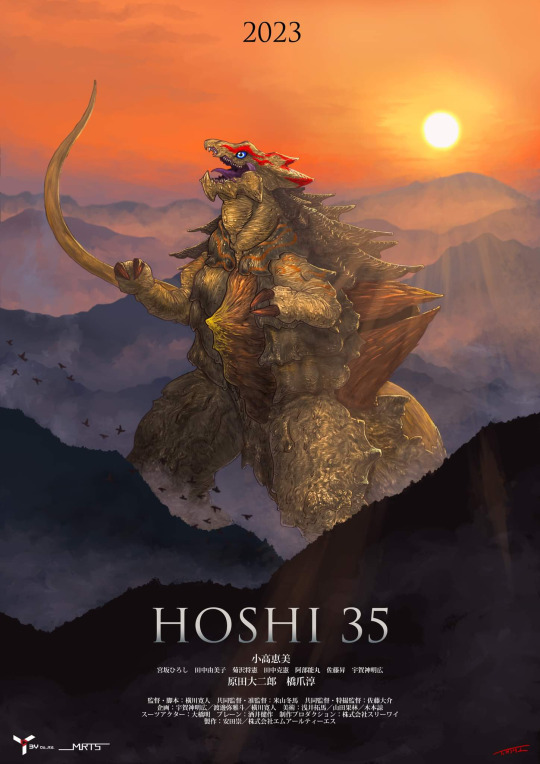
Megumi Odaka, best known as psychic Miki Saegusa from the Heisei Godzilla series, retired from acting in 2000 due to health issues and disappeared from the public eye for a decade. The narration she contributed to Godzilla vs. Gigan Rex was her first role since then, and she's finally ready to go back in front of the camera. 3Y Film (The Great Buddha Arrival, Nezura 1964) has a new kaiju movie in the works, Hoshi 35, which Odaka is set to star in. Since it's a 3Y joint, and part of a celebration of the 35 years since her acting debut, expect it to get meta. As usual, Hiroko Yokokawa is directing; another key player is Daisuke Sato (Howl from Beyond the Fog), who will serve as director of special effects, cinematographer, and suitmaker (with Tomoya Ayaki).
3Y productions are known for bringing back veteran kaiju actors, and Hoshi 35 has already cast several besides Odaka, this time focusing on the Heisei era instead of the Showa era. Jun Hashizume played MOGUERA pilot Koji Shindo in Godzilla vs. SpaceGodzilla and Kojiro Inaba in Ultraman Z, Daijiro Harada was Mechagodzilla captain Takuya Sasaki in Godzilla vs. Mechagodzilla II, and Akira Ohashi stepped inside Gamera in Gamera 2, Iris in Gamera 3, and King Ghidorah in GMK. He'll be playing another monster in this one, Hoshikuzu. Hiroshi Miyasaka and Yumiko Tanaka will appear as well.
No plot details are currently known. The film is aiming for a October 2023 release date.

Gridman Universe, the crossover film for SSSS.GRIDMAN and SSSS.DYANZENON, has a new pair of posters and a teaser trailer. It'll hit theaters in Japan on March 24 (and hopefully arrive in the West before the year is out). Excessive fanservice aside, I really enjoyed GRIDMAN, but haven't gotten around to DYNAZENON yet... it aired in Spring 2021, which was a pretty chaotic time to be a Wikizilla editor, and I think I was under the impression it was all mecha, no kaiju. Guess I have to now!

Veteran Ultra Series director Takeshi Yagi debuted a proof-of-concept short at Tokyo Comic Con called AKARI, which you can also watch online. The story is simple—a giant heroine (Akari) battles a rampaging cyborg kaiju (Pythagodon) in a futuristic, neon city—but Yagi and company have far greater ambitions for it. They created it as part of a course on tokusatsu techniques, and hope to turn it into a feature or series with the funds from that course, as well as other crowdfunding efforts. The story they've drawn up is pretty intriguing: a 2076 Japan where corporations run amok, the AI uprising is at hand, and an alien race who survived their own rogue AI empowers a woman to save the Earth.
Matt Frank designed Akari. Akihiko Iguchi (Mechagodzilla, King Caesar, Titanosaurus) came up with Pythagodon, and boy, you can tell. I hope we haven't seen the last of them.
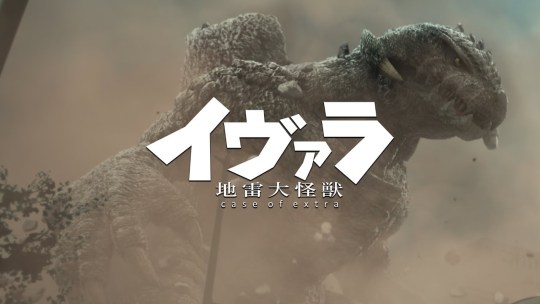
One more kaiju short for you to watch: Ivalla the Land Mine Monster: Case of Extra. This one is in more dire need of subtitles to get the full experience, but there's still a quality rampage to witness. From the other videos on the channel, Yuki Kurosu has been working on this for 8 years—props for persevering!
youtube
Godziban squeezed another episode out of Godzilla Festival 2022, this one focusing on the puppet displays and demonstrations at the event and the upcoming Blu-ray-only episodes which will see Bagan make his debut and many others battling it out.
youtube
Kadokawa released a fine video tribute to Gamera for his 57th birthday, which naturally ends by teasing the Netflix project. Interesting that they skipped over the 2015 short though.

Your reading assignment for the week is Patrick Galvan's excellent tribute to Kazuki Omori for Toho Kingdom, a well-researched overview of his career and analysis of the two Godzilla films he directed.
#hoshi 35#megumi odaka#gridman universe#akari#ivalla the land mind monster case of extra#gamera#kazuki omori#godzilla#kaiju#tokusatsu#vfx#godziban#bagan
116 notes
·
View notes
Text
about me — people i’d like to know better.

LAST SONG. “Trickster” and “Showdown”, both songs by the Japanese band FIVE NEW OLD. They are opening themes for the anime HIGH CARD, which I finished binging just last week. The songs incorporate a lot of English lyrics—the main vocalist, HIROSHI, is a fan of Western culture since young. His English pronunciation in those music videos are pretty good. A quick content warning about the songs involving poker card themes, to err on the safe side.
FAVORITE COLOR. It’s hard to pick just one specific color, since I’m a fiend for graphic and web design… I’d say monochrome—all the different shades of gray, including white and black. I like neutral colors most since they’re very versatile when combining with other colors to make palettes for my design ideas… and well, it also makes clothing coordination fairly straightforward, because I can’t be bothered to spend time thinking what to wear every day, you know?
CURRENTLY READING. Wuthering Heights, by Emily Brontë. When I first read this book—as a teenager and merely out of curiosity, I recall—I was fairly disgusted by the characters, especially at the raw violence and toxic relationship between them. Now that I’m older (and hopefully wiser, I dunno), maybe my opinion of this novel will change. We shall see. I don’t recommend this book to minors because it’s a disturbing read, and I’m saying this from personal experience, lol.
CURRENTLY WATCHING. Odekake Kozame (en. Little Shark’s Outings). It’s a short animation series depicting the slice of life of a very cute baby shark called Kozame-chan. It’s based on a collection of short comics by Japanese artist Penguin Box, which were originally posted on Twitter. It was later picked up for serialization by Kadokawa Corporation and Enterbrain for their Aokishi magazine since October 2021. I highly recommend this wholesome series to brighten up your day and help you stay positive!
SWEET, SAVORY, OR SPICY? Sliding between savory and spicy depending on my mood of the day. I don’t like sweet stuff, and usually tend to avoid them unless I really have to take some.
RELATIONSHIP STATUS. Single and happy to stay this way. I’m not stopping my muses—especially Yiuno—from trying to find a partner in life, though.
LAST THING YOU GOOGLED. I don’t keep track, honestly. I mainly use Google search like a dictionary. I mean, at least it’s ad-free, I guess?
CURRENT OBSESSION. Aside from my muses (I’m forever and always obsessed with them), I’d say dark academia—with sprinkles of Victorian and gothic aesthetics. And maybe a bit of witchcore and vampcore.

Thank you very much for the tag, @miqojak!
It took me a while to fill this up because I tend to write a lot, just like you.
6 notes
·
View notes
Text
Game Pile: Commander Keen — The Kid; id; Tom Hall
youtube
Hey, kid
Hey psst
Ya ever heard of this game, DOOM?
Doom, the Firstest Person Shooter. Before the 2016 game that came out trading on its identity, this name referred to a game that came out in 1993, and was quickly followed by a sequel named Doom 2, then by Quake then by Quake 2, then by Half Life, then Half Life Episode two, then Half life Alyx – and there is a chain of history that defines the literal everyday environment of videogames that is, probably, directly spawned from DOOM. Steam, one of the dominant gaming platforms, is in part the result of people who made a mod for Quake called Team Fortress, which was one of the children of DOOM. A large body of the early architecture making remote gaming possible pre-internet that was made For DOOM started out with a service called DWANGO, which was so successful in Japan that it’s now a major corporation that itself owns Spike Chunsoft, and is owned by Kadokawa, the company that runs Bookwalker. Competing with and attempting to displace the genre of gameplay Doom and its children in Quake created resulted in a shareware distributor called Epic Megagames to create the videogame Unreal and that engine now runs everything including Star Wars TV Shows. Doom is so important to games that for a time that genre of ‘first person shooter’ was known, at one point, as doom clones.
Doom is important.
Doom is so important it’s difficult to express how important it is.
Talking about how important DOOM is to gaming history is like trying to describe the importance of Franz Ferdinand. Except that dude isn’t fun at parties, since he’s dead, while by comparison, you can boot up original Doom right now and still blast around having a great time with a game that largely holds up using a simple system of design tools iterated on endlessly over thirty years. We have never stopped playing DOOM.
When we talk about games being important, we tend to describe games in a way that hints at a sort of historical sequence of necessary steps – hi Ted, I know I’m skirting close to teleology here. You know, the narrative that this game existed so this game can exist so this game can exist. Trust me, I’m not: This is not about how things had to happen, it’s about reflecting backwards on how people say things happened, because they’ve told us. In the same way that 90s terrible RTS Krush Kill N Destroy directly led to the creation of Total Warhammer because it sucked so bad, we know that Doom and its enormous success is what led to the gaming landscape we live in looking like it does now.
DOOM is one of the great landmarks, one of the first touchstones, of the PC gaming landscape that made it relevant to gaming beyond the boundaries of the PC.
With that in mind, let’s not talk about DOOM.
Let’s talk about the game franchise that made it possible for DOOM to exist. Let’s talk about the language of Minecraft, the formation and end of id software’s earliest identity, and an inexplicable cameo by Tom Cruise.
2
Let’s talk about Commander Keen.
Kicked off in 1990, Commander Keen is a series (kinda) of six games, made and distributed with the at the time new Shareware model of games. They’re adventure stories, focused on the adventures of one William Joseph Blazkowicz II, aka ‘Billy Blaze.’ Incredibly smart, with an IQ of 314, Billy is an inventor, who at the age of only eight, has been tinkering away in his backyard, even making a spaceship out of junk from around the home. For reasons at that point uncertain, he dons his older sister’s football helmet, and declares himself Commander Keen! Defender of something or other, depending on the text. All we know really, about Billy at this point, is that he’s a plucky kid, he’s a boy genius, and he’s going to solve problems himself.
It’s Calvin and Hobbes, but the spaceship is real and the sense of humour is grim.
Shareware was a really cool way to get games back in the way – you were given free licence to distribute some or even all of a game, as shareware, but the people who made it asked you to send them some money to register the copy, as a thanks for the program you had. Sometimes registering shareware would also get you more of the game or product. Doom was shareware, Wolfenstein was shareware, almost every game distributed by Apogee and Epic Megagames were some sort of shareware, and shareware was the way that good, easily distributed games became popular and made money enough to sustain their development. That meant that a lot of games of this time were divided up into chapters, so they could shareware the first part and then sell the rest. Such is it with Commander Keen’s first three games, the Vorticon Trilogy.
First up we have Marooned on Mars. In this story, while his parents are off having a nice dinner, Keen sneaks out and goes to Mars. As you do. He explores around a bit, and when the time comes to head home, finds his spaceship, the Bean-with-Bacon Megarocket, has had four of its parts nicked, and now you’ve gotta go explore the world to find them. Along the way, you encounter the aliens of Mars, which range from the friendly Yorps – one-eyed goofy friendly problems that run into you and push you into things but are just trying to be friendly – to the deadly Gargs – giant two-eyed monsters that can race at high speed towards you to kill you – and finally the pajama-clad Vorticons. Not Vortigaunts, they came along later, but builds on my theory that this game is part of the lineage that leads to Half Life 3.
Vorticons are a kinda-dog-alien that isn’t from Mars with the mysterious ability to jump. The Vorticons are connected in some nebulous way to the plot to keep Keen stranded on Mars,which they didn’t just try and do by waiting by the Megarocket and kill Keen, but you know, we take those. You thwart their plot, usually by shooting these Vorticons, you drop an enormous weight on their leader, and then make your way home.
This was the shareware episode of the trilogy, so it’s the one most people of the time are likely to know. It dropped in December 1990, and gave you 16 levels to peek around in. It was brightly coloured and had big, detailed (for the time) sprites. In purely technical terms, it’s incredible, but not in ways that most people would ever even notice. It’s a real classic videogame of its type, and you might be forgiven for asking ‘well what’s the big deal’ to look at it. This is definitely a type of game that looks unremarkable to the Nintendo market at the time – it’s basically a slightly higher resolution version of something like Super Mario Bros, and maybe a bit more of an exploration game than a to-the-right hold-on-tight plotless execution game.
We got a lot of videogames early on in the history of shareware that were ultimately exploration games. Drop you into a space to look around, and then gives you stuff to find that lets you win the game. A lot of them were about going to some strange distant place, and walk off with the treasure. This particular narrative, from a designer perspective, is really desireable because it encourages you to get involved with a place and look around for things you might want, but also it’s a trend you’ll see come up in a lot of conversations around colonialism in games. Yes, I’m saying Paginitzu is probably racist. And yes, that game series goes places, but we’re not talking about Paganitzu here. We’re talking about Commander Keen1, Marooned on Mars.
What Commander Keen does is that instead of putting you in the shoes of a coloniser, it puts you in the shoes of an explorer who has been trapped. Keen shows up on Mars to look around (because dang that’s cool), but his goal isn’t the enrichment of the self, it isn’t his own treasure and loot, it’s rather reclaiming earth artifacts that the Martians seem to have stolen (why do they have Pepsi?) and the tools taken from him to stop him from escaping.
Mars’ history, as we understand it, is that there are the Yorps and the Gargs. Gargs, violent and aggressive, ruled over the Yorps for year and built a civilisation on Mars, and then in 1976, humans accidentally killed the King of the Gargs by dropping a exploratory probe on him at speed (based). Then the civilisation was fractured, and all these city states are left to fend for themselves… and then the Vorticons show up and take over a few places. It’s weird because in a way, as much as this silly aesthetic holds together. In the context of trying to make a game that looked and felt like the Mario Bros, short for Brossentias, It’s kind of just videogame stuff… and it tells you about a colonised people at war and their attempts to ensnare a stranger into their mess.
I believe this to be entirely, one hundred percent accidental.
3
Alright, so, moving on to the next game! Keen fixes the Bean With Bacon Megarocket and flies back home to earth before his parents come home from their nice dinner out (this was a thing that could happen in the 90s, it’s wild). Anyway, they arrive home and check in on Billy. Finding their beloved son faking being asleep, they’re about to go to bed themselves before they notice the Yorp he brought home. Rather than contend with it so late at night, his parents promise to talk about it in the morning and go to bed.
Once his parents have gone to bed, though, Billy sneaks out again, because now he has to deal with the huge floating battleship next to Earth that he saw on the way home.
This begins the second game , where you now have to quest your way through a battleship, which has guns trained on a bunch of important(?) earth cities. If you want, you can even fire the guns, ending the game and blowing up a city you think sucks. But it’s the same basic energy as the first game: Find your way through levels, avoid baddies, shoot things, explore secrets, and break the right machines so you can get out and go home.
In any given trilogy you run the risk of creating the ‘middle’ problem. The middle of a story doesn’t usually get to do anything because the stakes are set up in the first part and resolved in the third, so the middle can feel like padding. The Earth Explodes avoids that because it is still an interesting game with its own exploration mechanic to it, and a real consequence for failure, its own stakes, but the why isn’t explained. It is a detour but not an unrelated detour.
3.1
Also, this game has a gun. It’s not Keen’s first gun. His first gun is the one you pick up from the surface of Mars, not one of the things Keen makes himself. That’s also where he gets the pogo stick which was maybe some sort of alien artefact they stole from Earth a long while ago, sometime after 1919. Don’t get bogged down in those details. The point is, the gun in Commander Keen is external to the self. He gets his first gun in the first level, and it’s marked with a sign that he can’t read.
This gun is essential to completing the game – there is a final puzzle that cannot be solved without access to the gun. Also along the way, numerous lethal threats can be contained with the gun – enemies that are willing to kill Keen are shot, and stop. Some things won’t stop when shot, and some things are only annoying when they’re un-shot, but basically the gun is framed as a tool for protecting Keen himself.
In the mothership, you pick up your next gun, which seems largely the same as the last gun, but stronger – it can now best Vorticons in only one hit – and you’re off. Keen disables the many guns of the mothership and is presented with very few opportunities for a truly pacifist run. While the nature of the game doesn’t make shooting enemies absolutely 100% required, it is definitely necessary for a blind playthrough, and level design makes any alternative pretty much impossible for playskill levels that doesn’t rely on speedrunning pixel-perfect tricks. This is a game where the gun is essential (for breaking the ship’s plot-critical guns, as gun feeds on gun) and presented as part of solving problems.
But there is an optional level you can do, where you find, after a long passage that has involved shooting some more Vorticons, a frozen Vorticon. The frozen Vorticon tells you that first of all, the Vorticons are mind controlled at the behest of the Grand Intellect. All of them.
Then it asks you not to kill them.
This carries with it two horrifying realisations. First, to proceed through the rest of the game with this knowledge requires knowing that you are killing Vorticons, helpless slaves in their own bodies. That’s bad. That’s a rough challenge for a game that is, at the least, a bit unfair about how it distributes difficulty and spawns sprites in its enormous, chunky, vertical-over horizontal engine. This game isn’t easy, and I haven’t finished it without shooting, despite my time trying.
The other thought is that you’ve already killed people! The Vorticons aren’t an alien nothing, the guns you shoot on Mars aren’t knocking people out, they’re killing people, and the killing was done without you necessarily knowing. Though I guess there wasn’t a way to nonviolently crush the Vorticon captain.
The justification – that they are threatening you and may kill you – is perhaps compelling (and we’re not going to get into the Juul-side idea of how multiple lives interact with the game fiction), but even then that’s not necessary because why is this game about being an 8 year old super scientist so dark all of a sudden, and also, all along.
It’s one of those things that I think is part of how Tom Hall got along in id software early on. There’s a bleakness, a schlockness to it, and it is pretty funny to realise the game at one point goes ‘hey, blood is on all our hands. Anyway, doot de doo, go get some teddy bears.’
4
This is an interesting example of what structuralist game examination, the kind Gerard Geanette never does, calls hypertext. Text is the work, a participation in the media, then there’s paratext, the zone of media created to experience that media, which includes things like interviews about the work, the box it came in, the way your room changes your perception of the light. There’s also subtext (things in the text implied but not stated), and supertext (things the text says that it has in common with other unrelated works), as well as metatext (the way the text replicates trends in other, related works), and finally, finally we get to hypertext.
Hypertext is the way a text changes when you participate in the same text multiple times. First coined when describing interactive fiction (like Twine games!) Hypertext is the conceptual space where videogames can thrive. Hypertext is how you can develop a view of a text by iterating over it again. Sometimes this means rewatching a movie with a twist ending, or watching a movie for the thirtieth time and seeing all the technical details in it now you can appreciate them, or maybe it can mean reading a book twice, with a ten year gap in between. The point is, hypertextuality is using the text to examine the text.
In this case, the first time I finished Commander Keen 2, I never thought about the moral implication of the shooting, because I figured the enemies would get back up. Some of them did. Some were immune. And they were shown falling over, or bouncing and glaring or being surprised at their state. Also, it was a boy’s adventure! There was no need to think about the morality of the violence because the story was more focused on exploration and making that violence relatively low impact. You don’t see blood or violence or injury. Just, well, enemies are zapped.
Once you know about this other point – that the gun works, the gun kills, and nobody you kill in game 2 deserves it – the entire game changes. You can’t not know about it. It was true whether you knew it or not, and the game has no intention of making you feel good about whether or not you engaged with that.
That is some heavy stuff to drop on an 8 year old!
5
Commander Keen 3, Keen Must Die, is the capstone of the first trilogy, and is meant to be a kind of finale for the character (for now). While one is an escape and two is a rescue, three is a weird kind of journey to confrontation, and the first real representation of something you could consider a boss monster in this otherwise runny-jumpy looky-shooty game. In 3, Keen travels to the homeworld of the Vorticons to do battle with the Grand Intellect, who is both in charge of the invasion force and directly out to get Keen, personally. To defeat the Grand Intellect, he fights his way through the normal homes and lives of the Vorticons, which have been militarised and made into defences for the Intellect.
The intellect, who you then discover, right at the very end is your rival!
No!
Way!
Who you’ve never heard of before this point!
It’s Mortimer Mcmire. Not Morty Maxwell. That was a different 90s videogame villain, second Super Solvers reference ding.
Why does he want to blow up the earth? Well, because everyone there sucks and he’s smarter than him. That is to say, Mortimer McMire believes that everyone in the world who doesn’t test well on an IQ test compared to him deserves to die, and in that way this game was remarkably prophetic about the state of nerd culture in 2023, yikes. Mortimer’s IQ is 315. Billy’s is 314. You know, pi reference. Mortimer, knowing that he’s smarter than even the smartest other kid in the world, has resolved that he can blow up the world and lose nothing. Which, if nothing else, you have to respect the scope of the pettiness.
6
Structurally, 3 is Billy kind of presented as an aggressor and it’s for a strange purpose. He’s on the Vorticon’s home planet to try and find the person imprisoning them and liberate them, but in the process of liberating most of them he’s going to certainly kill a lot of them. Including several children. The story even makes a point of it: The final narration says that you’re crowned and hailed as a hero by the Vorticons you haven’t slaughtered.
Cough, pause, anyway.
Something you might have noticed so far is that despite being games full of levels for you to play, the narratives of each Keen game quietly ask you to finish the game with as little time spent in the game as possible. In the first game, you’re under a time crunch – you have to get your ship repaired before your parents come home. In the second game, your priority is the destruction of the guns on the ship, and you don’t really care about the other things on the mothership. In the third game, you’re exploring the everyday homes of the mind controlled Vorticons, who you know definitely don’t deserve to be killed.
It’s interesting because this kind of game is one where the fun of the game is usually in exploring and playing them. There’s reward in the form of points from doing a level and looking around in it and finding stuff. They make you stronger or better though, Pogo stick aside, you never get better, you just get lives and points and ammunition. The first time through the game you’re trying to find the end of the game, but after that point, on the second play through you’re left playing a game where your optimal path through the narrative is playing as few levels as possible.
These are games that narratively invite speed runs.
7
Oh there’s more to it of course, like there’s a whole narrative about Mortimer McMire, and the idea of Billy having a villainous opponent. Across seven games, then, there’s a chance we’ll see more development from this character, right?
Right?
(Not really).
This game also gives you the first full translatable cipher of the Standard Galactic Alphabet, which is used to decorate all the signs around the levels. When you find this secret area it lets you finally go back and translate all the other notes you’ll find written in this.
Like you see in Minecraft.
Yeah! Minecraft’s little weirdo script of enchantments? That’s from Commander Keen.
Does this mean anything? Not really. I guess Hatsune Miku is a fan of 90s shareware videogames.
8
Thus ends the first three games of the Commander Keen saga. But those are the games as game texts, things for immediate critique. The games are boxes you reach into and you move the parts around inside them. What about the box outside the box? What about the machine that made the game, the id software that started a genre that defined an industry? And where does Tom Cruise figure in? And I know, I know, if you’re a super nerd who knows the origin of Doom you may think you know how Tom Cruise is involved, but no, it’s not that.
Commander Keen was a game made to solve a problem. Before Commander Keen, the PC videogame market had an unsolved problem, and it was a problem that the consoles of the time, the Sega Genesis and Super Nintendo, could handle easily. The question was about smooth scrolling to create a space. If you looked at videogames from before Commander Keen, it’s very rare to see a game where a game entity, like a player, walked forwards and the screen moved with you.
Instead, you were likely to see screens that split things up bit by bit, or limited the movement of the player to big, chunky steps, because what it was secretly doing was drawing simple tiles and keeping a protagonist moving slowly was a good way to keep the buffer from being overwhelmed.That’s how other games, such as the Super Solvers, handled their Ageless-Faceless-Gender-Neutral-Culturally-Ambiguous-Adventure-Person, waddling along at a fixed rate in a slow scrolling background in fixed distances. These fixed steps meant that
Even then, you’ll notice, the screen loading is weird and feels choppy. This creates a phenomenon called ‘tearing,’ where layers of the screen load differently to one another.
Okay, so, scrolling backgrounds and fluid movement. It was a thing EGA based PC games could do, but couldn’t do it fast, they couldn’t do it fluidly, and they also couldn’t do it in a way that handled input from players and allowed for fast reactions.
The problem was the EGA chip, or ‘Enhanced Graphics Adaptor.’ It was a lot better than its predecessor, the CGA Colour Graphics adaptor, but both were pretty ugly. CGA could manage four colours, but EGA? It stepped up to sixteen whole colours. The VGA was years away and the EGA was the industry standard for PC Games, and what it could absolutely not do is Nintendo-style smooth scrolling. Now I’m not going to try and give you a lesson in how the EGA chip handled things, because I can’t, and even if I tried, it would just be me copy-pasting into my script from Masters of Doom. The solution, as best I can describe it is that they simply lied to the graphics display about what they were loading.
Rather than try to load the whole level on demand, at any given point, you were loading A Little Bit More of the level than you could see, and moving that grid of extra space around. You had one full tile on each edge, – you showed a 15×15 square of screen tiles, but you were loading a 17×17 square – and when you moved over one, you didn’t load a neverending thread in that direction, you were just moving the invisible tile off the edge into the visible area, unloading the ones that just left, and loading into the freshly emptied space. Rather than ‘on demand’ it was a sort of ‘just in time’ delivery system for visual information.
When it comes to this kind of ingenuity, you hear that and I bet, if you’re one of my very smart graphic friends with lots of technical knowledge and bappy wolf paws, you go ‘duh.’ But also this was being done on a chip that could manage eight kilobytes of graphics at a time. For comparison, the plain text Wikipedia page on ‘kilobyte’ is 227 kilobytes. The plain text of this script is – at this point of six thousand words – thirty kilobytes. Eight clapping emojis is about eight kilobytes. Eight kilobytes is very small, and using a space that small to process smooth visuals, atl east the first time was very, very impressive.
Commander Keen isn’t the first thing they made with this. The first thing they made was Dangerous Dave in Copyright Infringement, which was a proof-of concept where they made a Super Mario Bros level that ran fluidly and correctly on an EGA computer. This was a disk famously left on Romero’s desk after Carmack spent all night making it work, and was a proof of concept that the PC could do the kinds of games they wanted to do, that they could make the things they wanted to make the way they wanted to make. In a lot of ways this technology is what let id software form, going from a business in potential to people with a product.
A year before Commander Keen 1 came out, the MCGA and VGA chipsets dropped and EGA was a dead chipset walking. When Commander Keen was out, it was already running on old tech. But PC gaming moved slowly, people weren’t going to update their video card to run one game – and making a game that ran on the computer most people had was necessary.
9
After the closure of the Vorticon trilogy, what next? Well, next up was the ‘lost’ chapter of Commander Keen: Keen Dreams, released only months ahead of the next ‘real’ Commander Keen game, in mid 1991. Keen Dreams marked a turning point in Commander Keen design. Where the first games were about overcoming a technological impossibility (as they perceived it), Keen Dreams was a game to address a new problem: Legal obligations.
Commander Keen was a success! Id software had the money to make themselves into a proper company! They could stop working it as a hobby while doing a day job, pulling together the early dream team of Johns Romero and Carmack, Tom Hall, and Adrian Carmack. Together this squad left their job at Softdisk Software to make a new company.
Except there was suddenly a little spike in the tail – because it turns out they’d developed Commander Keens 1-3 on Softdisk’s computers, in their off time at work. Id, considering the situation, and really, really wanting to make their own games rather than being on the hook to keep being part of Softdisk, made a deal to settle this misuse of company machinery. The deal was that they’d make several games for the Softdisk Gamer’s Edge subscription service. This deal was, essentially, a shareware game a month. Id delivered on this and sure, the games had a fairly healthy ‘guess that’ll do’ vibe. Educational games, puzzle games, a mah-jong game, things that can be made pretty easily and the question of how well you do is a matter of polish. They weren’t all walk-it-in style friday-night-of-the-assignment games though. There wer the two pre-doom first person shooters Hovertank 3d and Catacomb 3d, and the Very id vibes game Dangerous Dave In The Haunted Mansion.
And there was Keen Dreams.
Keen Dreams is a… decent game. It’s fine. It’s alright. It’s definitely weaker than Keen 4 and a little bit better than Keen 3. There’s less game here than you’d think, less spectacle, less fun exploration. Enemies are all based on vegetables, and usually, some variety of pun or playing with words that sounded similar. You’re going to run through places that are, well, also puns or wordplays, find keys, collect Flower Power for flinging at baddies, in an attempt to defeat the villain of the story, the leader of all the vegetable kingdoms, Boobus Tuber.
9
Keen Dreams is definitely a Commander Keen game; it’s about Commander Keen. It was the first of the VGA Keens released but not the first made. It was essentially . Now, the remaining three Keens (4, 5 and 6) use this base engine, but they have a very different style. They continue Keen’s adventures into space while Keen Dreams is focused instead on the story of Keen being a child. The first adventures were about getting up to something exciting when left to your own devices and your parents were out at dinner, or dealing with a school bully, while Keen Dreams is about not wanting to eat your vegetables and having a nightmare about being tormented by food you don’t like.
The whole game has a lot of what I think of as Tom Hallness to it. There’s a really deliberate lightness to the whole thing – Tom’s reported that his parents weren’t happy with how the Vorticons in Commander Keens 1-3 left behind corpses, because, y’know, you were killing them. In Dreams, instead, your Flower Power seeds that you throw at enemy vegetables, they just turn them into flowers for a bit. When you ‘die’ you don’t even do the classic wiggle-bounce that other Keen games do. You fall asleep. It’s just a gentle game, really.
It’s weird then, that Keen Dreams has a failure state.
The Commander Keen games are relatively robust. They’re not glitch-free, by any means, with the first three games having holes in the ceiling you can thwack into, the ways Dreams lets you sneak keys out of levels, 4’s death warps and 5’s door manipulation, or the most ridiculous thing you can do in Keen 6. Still, the games are, for the most part, an engine dedicated to to handling scrolling correctly.
Levels are largely about just moving – running, jumping, climbing, predicting your jumps and your awareness of vertical or horizontal arcs. They’re pretty much simple iterations on simple objects, and there aren’t a lot of things that can do things that create weird glitchy situations. Plus, the way that you die to almost everything dangerous means that if you’re ever stuck, the game will usually default to just killing you off, and that kicks you out of the game. You may not win, but the game doesn’t lock up, with nothing to do, while it deprives you of ways to advance.
Also, to make the exploration more safe, Keen games tend to be designed as a sequence of levels you can do in almost any order. That means outside of skipping the Pogo in Keen 1, it’s very hard to make whole levels unwinnable by dint of a choice in the earlier game, and it’s not like the Pogo is hard to get.
In Keen Dreams, to kill Boobus Tuber, you need things called Boobus Bombs. Those bombs are scattered throughout the world in sets of three, and in a number of levels in hidden spots – you can finish those levels without getting the bombs. That presents the possibility that you can finish all the game’s levels without getting enough Boobus bombs and find yourself running around in a game world that cannot be finished. There are seven levels with Boobus bombs in them, which means it’s possible to finish four of the sixteen levels, and by not getting the Boobus bombs there, meaning the game doesn’t have enough Boobus bombs in it to finish the game.
It’s a byproduct of freedom and it’s an example of something id games normally design around. It’s a lesson that most of the subsequent Keen games avoided. It’s a phenomenon that you might be familiar with in the Sierra game space as dead man walking syndrome, where the game is bricked, but you won’t know it’s bricked until you’ve spent a lot more energy exhausting your alternatives.
Oh and you don’t have a pogo and you can’t grab ledges, which means that Keen Dreams doesn’t control a lot like either previous or subsequent games.
10
But okay enough faffing around with the ‘lost chapter,’ this Contractually Obligated All Just A Dream Keen. What about the next place for the story to go?
Commander Keen 4: Goodybe Galaxy! Billy Blaze is off cruising the galaxy again looking for fun on the weekend, and he hears a distress call. Investigating it he finds that there’s a new threat to reality, but to understand them he’s going to need some heavy duty information gathering, which he does by approaching the Gnostiscene Ancients on the planet known as the Shadowlands. Thus begins another journey of Keen to the fire level, the water level, the ice level, the … hole… level? To find the eight beardie dudes and their janitor (if you’re good).
At its heart, the game is a treasure hunt, like Commander Keen 1 and 2. You arrive in a top-down world where you move around between a bunch of little places of interest, and these are levels. These locations of interest can bar your way to progressing to other locations, and there are other locations that are further barred by less obvious means. For example, there are some islands you can’t get to at first, and there’s no obvious adjacent level to beat to work out a way to progress. There are only about eight levels you ‘need’ to finish (some levels gate other levels), where you can find the eight Gnostic mystics that will be able to divine your needed information and win the game.
Keen 4 was the chapter almost everyone got to play, because it was free to share, because, like I said, shareware. It also was brightly coloured, had vibrant music if you had an adlib or soundblaster, and it didn’t feature lots of blood or guts, the way that videogames were parodied as being at the time. You weren’t shooting things with a laser gun that killed them (any more). Basically, Commander Keen 4 was easy to distribute and worth distributing. You’d use it to show off what your computer could do, and you could just straight up give someone a game for the cost of a disk as a present. That normally is enough to make a game a nostalgic classic, because videogames of the 90s were in many cases there to be something you reused until you absolutely had wrung everything out of it. In the case of Commander Keen 4, though, it’s a merciful coincidence that the game is also really quite good.
An interesting question is what are these places? If you look around the environments of Gnosticus IV, you’ll find that a lot of these places are designed to reflect a space people don’t necessarily live but where they do go. Locations like Slug Village, Border Village, Hillville and even the Perilous Pit are all clearly places people live, as you can tell by the number of doors and lodgings, even if they’re not exactly fleshed out with beds and the like. They’re all village-shaped, with a sort of villagey-ness to them. There are large forts, like Sand Yego and probably Crystalus, places that have some purpose that implies a construction, and there are pyramids, which imply mysteries and hidden knowledge with things like runic iconography.
This is of course, a byproduct of tilesets and the limited colour palette of VGA graphics. Oh, you could put 256 colours on the screen, but loading them and moving them around made scrolling less excellent, so if you made everything out of standardised tiles that you can bolt together, you get things to load faster. This is why very few levels have any unique visual elements – oh, they’re sometimes elements from another level, but aside from Miragia, most levels look like a unique combination of elements rather than a unique element. Which is also pretty cool, small numbers of parts used well.
Goodbye Galaxy is a mid-point game; it’s in a way, the kind of story you’d see as 2 of a trilogy, rather than the start of one (though, it and its sequel were conceived as a pair, not a trilogy). It’s because what you’re doing, the thing you’re after, primarily, is information. Billy is trying to rescue eight grumpy old men who can commune with a really powerful artifact (in a funny way) and get information Billy needs about how to stop the Shikadi.
11
If you look at videogames of this period, the typical end of any given game is killing something. The plots of these games may sometimes have made that end goal – a boss monster – something that may have impeded information, or may, like in games like Bio Menace, reveal to you that hey, actually there’s something else you didn’t know about, now. Now, I’m not getting all functional determinist here, I’m not trying to argue that because videogames express violence that’s all their good for, because it’s kinda dumb? But the premise of Goodbye Galaxy isn’t that you’re finding an artifact broken into pieces, or build a weapon, or awaken some evil you can kill, but instead you’re trying to find people, who can explain something to you. There’s something to be said about the instrument the game is shaping, and what matters to Billy.
There’s something weirdly sweet in all that, too: Billy is trying to learn something, and as much as it can be metaphorised, all of this game is about that quest for discovery. Oh, sure, he still gets through it with a stun gun, but there’s questions you have to answer on the way to building that collection of eight elders.
There’s something weird about this because we often see the question of ‘middle’ stories in trilogies as being hard to do. In Goodbye Galaxy, they don’t bother introducing or explaining the story (which they could do as their own thing), but if they had done a story introducing the conflict, then Goodbye Galaxy would be a nearly perfect example of a middle story. You know there’s a problem, you don’t know how to solve it, and you look for a solution that makes a game mechanical demand out of finding not the solution, but finding out how to find it out.
Anyway, what I’m saying is Commander Keen 5 is the real Half Life 2: Episode 3
One final note about this, though is this: The music in Commander Keen 4 is nothing but bangers.
12
Commander Keen 5 is kind of the last full conclusion that Commander Keen got. Not a shareware game, and arriving on the scene as BBSes were getting to the point of being able to pirate games a bit more readily, it was apparently a real good seller, at least according to id when asked about it. In 5, you’ve found and boarded the Shikadi’s Armageddon Machine, and have to travel to all the different parts of a great big ship – again – to disable all the bits of the machine that are going to do something bad – again – until you encounter a final stage that involves doing something a tiny bit different, and that’s new.
It’s back to exploring a location with more of Keen running jumping climbing fighting. This time instead of encountering wildlife and living creatures, he’s mostly fighting fighting against ship security, and guard robots and the occasional hapless system operator that can completely mess with the game code if it touches you accidentally.
By the time we reach The Armageddon Machine, the game definitely has a feel of mastery to it. There are more secrets designed to play with your expectations and assumptions. Monsters are a little more time-crunched, and there’s also the biggest monster in all the games, the wonderfully enormous big red robot. The levels are a bit more interwoven, a bit more easy to get lost. Reading the tea leaves I feel like the game is just a bit larger and made by people more familiar with the tools they were using, but also… I might just be getting that vibe because I’m less familiar with it.
13
Where Goodbye Galaxy was populated by monsters that were meant to be the native wildlife and weirdo beasts in the existing Shadowlands, the Armageddon Machine is a spaceship, set up and set aside from its environment. Everything in it is something that’s meant to be there, things with a purpose and a reason to be where they are.
Because someone chose to make them that way.
Because someone – someone human – is guiding these monsters. That’s right, once more the revelation is that the story of Commander Keen episodes 4 and 5 is about Mortimer McMire, and you can tell because uh
Uh
They’ll answer that later.
But yeah, monsters in Aramagddeon Machine are a lot more directly and deliberately malicious and a lot less whimsical. There’s no slugs that poop or charming friendly bouncer balls, or even just things that you can point at and see as creatures just living their lives. There’s a lot more mechanical, a lot more purpose to the game and its setting. But while Shocksunds may be cute, there’s something so much more charming about Goodbye Galaxy’s monsters, what with things like the pooping slugs and the Sneaky Rocks.
14
And then, finally, we reach the last game in the Keen Heptalogy, Aliens Ate My Babysitter.
Gosh, it’s just a nice one to look at. Or maybe that’s just me.
Keen 6 is set on the world of Fribbulous Xax, where Billy’s babysitter has been kidnapped to. It means you get a mix of the beautiful outdoor environments of the style of Goodbye Galaxy, but along with that, you also get the wonky, weird factories and buildings of the Bloogs as they emulate human society. There’s a really fun, charming aesthetic here that feels, again, to me, very Tom Hall, where there’s an inherent comedy in a world full of extremely stupid versions of things we’re already familiar with.
There’s a lot more funny, silly style to the monsters of Fribbulous Xax. A lot more silly words, things like you’re not breaking fuses and destroying elaborate machines, you’re getting the second biggest sandwich you’ve ever seen. There’s a grappling hook that you can’t really use but can kinda pretend you’re using! The bloogs have factories but run around in them smacking the ground with big clubs to guard things!
15
Iii love Keen 6. It has also one of the most ambitious end-games of all of them, with the final level being essentially a maze that’s explicitly trying to play with your memory and perceptions. It’s all in a very 1990s aesthetic, in the odd colour scheme and the wonky architecture, intestine walls and high tech flaming orbs.
Uh, Commander Keen 6: Aliens Ate My Babysitter is the most broken of the keen games, with a big bug that you would never discover if you weren’t actively trying to push glitches in speedrun tests. You see, somehow, the bullets your stun gun fires are considered objects – so if you execute the particular technique right, Keen stands on the bullet as he shoots it, which launches you in a straight line across most of the level. It makes Keen 6 one of the more shocking games to watch in speedruns.
Shout out to CapnClever for teaching me this trick.
Keen 6 ended with a promise of a final confrontation with Sir Not Appearing In All But One Of These Games, Mortimer McMire. This final confrontation never happened, for perhaps obvious reasons: There were no other Keen games. The license for Keen doesn’t really belong to id any more, and the people who made the first games all moved on to another stage of their lives, and other projects.
16
I like talking about Keen in light of Doom in part because Doom is so significant and important , but also because it’s this mix of adolescent and selfserious. It’s a game with murder and blood and demons and rocket launchers and chainsaws and it doesn’t feel like the followup game to a bunch of games about collecting teddy bears on Mars. It’s very easy to look at the gap in aesthetics between Commander Keen and Doom and Quake and ask ‘what happened? Did they lose something that made this kind of game not work any more?’
And kinda, yeah. The answer is Tom Hall. Tom Hall was the lore and fiction guy, the storyteller (and other stuff, I don’t mean to imply he just wrote documents all day) of the early id days. Famously, he didn’t have a lot to do on Doom and all the work he did on Quake was scrapped – and if you wanna know what that work was like, you can find it in the Ordering Info for Commander Keen, where that game describes the ambitious story of the future, of the game they want to make, far off in the future where you play a hammer-swinging demigod called Quake.
I don’t mean to just retell Tom Hall’s story. Hall moved on after id to work on games like Rise of The Triad and Terminal Velocity, both great games on their own terms, Anachronax which was at the very least an interesting game. It even fails to deliver on its plot and assumes it’ll get a sequel, in the true Commander Keen tradition. Nowadays, if you look him up on social media, he’s mostly spending his time playing with games, offering advice to other developers, and doing weird experiments like a game whose whole code base can fit inside two standard sized toots.
Tom Hall is responsible for the Dopefish’s design. He’s responsible for Commander Keen, along with others, of course.
It might suck to have his story have this wrinkle where id software pushed him out because they didn’t need him, but also: I suspect he’s pretty fine, now.
17
… Okay, so that’s Minecraft, Tom Hall, and is there anything I’m forgetting?
Oh! Oh yeah, there is!
Tom Cruise! Of course!
What are you thinking I mean relates to Tom Cruise in this project?
If you’re a particular kind of nerd, you might be thinking about how Tom Cruise is the guy who’s responsible for the name of Doom, based on this clip from Risky Business.
But no.
That’s about Doom.
That’s not about Commander Keen.
The traditional way to talk about id software is about its genesis. There’s usually the vision of the company as being at its heart, the intersection of the work between John Carmack and John Romero, usually as seen as being two guys in their early 20s, after major life changes, given the freedom and space to work with one another. But did you ever wonder how they met?
They met because they were both recruited, to make videogames, by a guy called Jay Wilbur. Jay was the guy recruited by Softdisk to make videogames for them, and he recruited Carmack and Romero, seeing a programmer and a game creator who both had the minds to work on the kinds of project he wanted them to make at Softdisk. And Jay Wilbur, who is now, the vice president of business at Epic Games, before he worked for Softdisk?
He was the guy who taught Tom Cruise how to mix drinks in a showy, theatrical way for the movie Cocktail.
18
There, I think I got most of the things you’d find if you just read the book Masters of Doom by David Kushner.
This video was the product of months of work, if you can call writing like this work, per se. It was originally meant to be a thing a lot like the text-and-video work like the Super Solvers. As it is, that didn’t work out for the schedule so instead I’ve just slowly chiselled away at the script for this one.
So hey, if you’re the kind of person who thinks that my short videos are bad, tell me about it, and tell me if you liked this. Or if you’re the kind of person who thinks my long videos are bad, tell me why this is bad. What I’m saying is please, give me feedback, I crave attention.
And of course: This was made with the support of my patrons over on patreon, and I thank you so much for that.
5 notes
·
View notes
Link
News - Anime News Network has announced their majority acquisition by Japanese media corporation KADOKAWA.
Quote from Christopher Macdonald, President of ANN (To be appointed as the Publisher of the new company), says: ”I am excited by this opportunity to work with Kadokawa and Kadokawa World Entertainment to dramatically improve Anime News Network during the course of the coming years. Myself and all of ANN's staff remain entirely dedicated to the standards of professional, exhaustive, and editorially independent journalism that ANN is already known for and we believe that Kadokawa's resources will be a great benefit to ANN's journalism and our readers.”
17 notes
·
View notes
Text

BOY73, a short horror adventure.
Now available for browsers and PCs at Itch.io
The year is 1973. Help him escape the abductor's apartment.







"I don't care what it takes. They won't take you away from me."
[ Completion time: 30-50 minutes ]
[ Letter progress is automatically saved ]
Mac / Linux Disclaimer: I do not currently have the resources to conduct proper software testing for Mac OS X and Linux platforms. Unforeseen bugs and incompatibilities may occur. If such things come to pass, do not be afraid to contact me at [email protected] to report errors or bugs.
Itch.io: https://clark-padmore.itch.io/boy73
Credits:
Developer: Clark Padmore
Email: [email protected]
Music / Sound: created with DefleMask
Made with RPG Maker MV
©2015 KADOKAWA CORPORATION / YOJI OJIMA
Plugins:
Yanfly Engine: by Yanfly
Victor Engine: by Victor Sant
Other Plugins:
CT_Bolt
HimeWorks
Jackkel Dragon
Jason R. Godding
Ossra
Sasuke KANNAZUKI
Shaz
Tor Damian Design / Galenmereth
Yoji Ojima
Special Thanks to the RPG Maker development community.
This project would not be possible without them.
#BOY73#gif#flashing lights#horror#horror games#indie dev#indie horror#rpg maker#rpg maker horror#my game#my art
4 notes
·
View notes
Text
Roguelike horror action game SHINONOME ABYSS: The Maiden Exorcist announced for PC
From Gematsu

Publishers Kadokawa Corporation, Kadokawa Game Linkage, and ABC Animation, and developer Wodan have announced roguelike horror action game SHINONOME ABYSS: The Maiden Exorcist for PC (Steam). It will launch this fall.
It is unclear what connection SHINONOME ABYSS: The Maiden Exorcist has to the existing Shinonome game, which is also developed by WODAN and currently in Early Access. One part of the description mentions that the game “has been significantly improved from the previous Shinonome,” but it is unclear whether it is an enhanced version of Shinonome or a sequel.
Here is an overview of the game, via its Steam page:
About
The main character is a shrine maiden named Yono, who has to survive in a haunted houses where Mononoke (yokai and vengeful spirits) lurk, using a limited number of items and traps in this strategy roguelike horror action game!
Shrine Maiden Yono Takes on the Challenge of Escaping From Numerous Haunted Houses in This Roguelike!
Following in the footsteps of her missing Onmyouji brother, shrine maiden Yono arrives at a terrifying place where Mononoke (yokai and other vengeful spirits) live. The very structure of the mansion changes every time you enter. There are three game modes: “Harai,” “Misogi,” and “Gyou,” with “Gyou” being the highest difficulty mode, in which players compete to see how long they can survive in an endless dungeon.
The Goal is to Escape From the Haunted House and Defeat the Mononoke by Making Full Use of the Traps and Devices Hidden in the House!
First, confirm the type and number of Mononoke by listening to noises coming from the next room, finding traces of the Mononoke, etc. Try to surmise the fighting style of the Mononoke and defeat them by setting up traps and then calling them over to you by making noises so they fall in the traps you made. You can also try to understand the structure of the mansion and defeat the Mononoke by luring them into open fireplaces and pits. Defeating them in this way allows you to gain and save items as well. Survival here requires knowledge, experience, and courage. When Yono is in grave danger, another side of her personality appears, and she is greatly strengthened. Predicting and controlling this change is also a key to success.
Various Elements Have Been Greatly Improved from the Previous Game!
The game has been significantly improved from the previous Shinonome, with more Mononoke appearing, more traps and items, more dungeons and a big boss. The addition of Yono’s other personality is also a new element. Based on the player’s feedback from the previous game, the game content itself has also undergone tuning in order to make it easier to play.
Production Staff
-Director / Game Designer: Kenichi Iwao
Major Works: Resident Evil, Einhander, Parasite Eve 2, Final Fantasy XI
-Character Design: Tatsuya Yoshikawa
Major Works: Breath of Fire series, Devil May Cry 4 and 5, Last Ranker
-Programming: Hiroshi Ogino
Major Works: Shiren the Wanderer: Mystery Dungeon, Fate/Grand Order, Culdcept Mobile
Watch the announcement trailer below. View the first screenshots at the gallery.
Announce Trailer
youtube
#Shinonome Abyss: The Maiden Exorcist#Shinonome#Wodan#Kadokawa Corporation#Kadokawa Game Linkage#ABC Animation#roguelike#action game#Gematsu#Youtube
8 notes
·
View notes
Text
Light Novel Review: Full Metal Panic! Collector's Edition Omnibus Volume Two
Light Novel Review: Full Metal Panic! Collector’s Edition Omnibus Volume Two
Full Metal Panic! Collector’s Edition Omnibus Volume Two is a hardcover release that includes the fourth, fifth, and sixth Full Metal Panic! light novels.
Full Metal Panic! Collector’s Edition Omnibus Volume Two
Written by: Shouji Gatou
Publisher: Kadokawa Corporation
English Publisher: J-Novel Club
Release Date: January 5, 2021
I’m reading the light novels after having already watched the Full…

View On WordPress
2 notes
·
View notes
Text
Noizi Ito, Hajime Kamoshida, and Mine Yoshizaki named as “Supporters” of the 1st Tatesc Comics Global Awards!
Noizi Ito, Hajime Kamoshida, and Mine Yoshizaki named as “Supporters” of the 1st Tatesc Comics Global Awards! #webcomics #comics #digitalcomics
Kadokawa Corporation has began accepting international entries for “The 1st TATESC COMICS Global Awards” on March 9, 2023. Kadokawa World Entertainment coordinates the contest for the English language. In an expansion of the award, a new “Supporter” system has been implemented, with top Japanese creators providing professional insight to emerging talent.
Kadokawa has announced that Noizi Ito,…

View On WordPress
0 notes
Text
C101クトゥルフ神話TRPG新刊『アルミホイル少女』
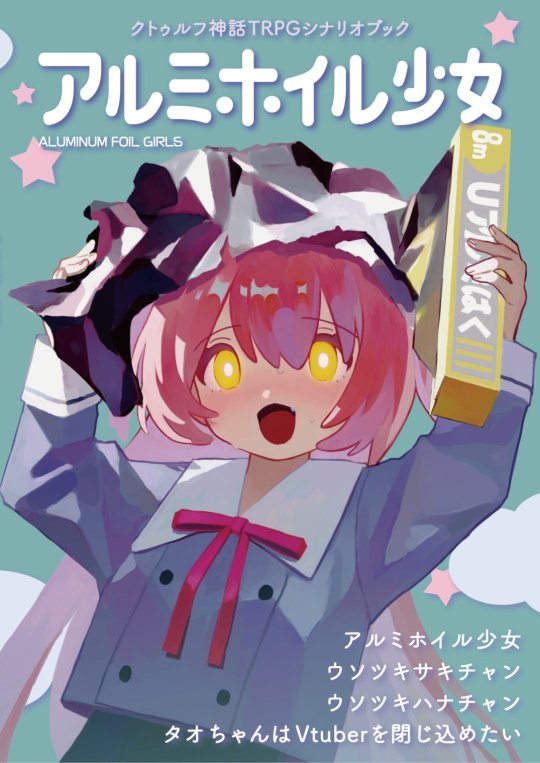
『少女から始まる電波的で刺激的なセッションを貴方へ』
4人の少女が織りなす電波で狂気なクトゥルフ神話TRPGシナリオブック!
思わず頭にアルミニウムを巻きたくなるような物語が4本詰まって登場!
楽しさとやりやすさを重視した初心者にもおすすめの一冊!
コミックマーケット101の1日目にて頒布開始!
♦収録シナリオ
1.アルミホイル少女

御茂炉(おもろ)高校の学生である探索者たちが急展開に四苦八苦!
頭に巻くアルミホイルを探して電磁波、陰謀、環境保護!!!
暗殺者にマイクロチップに魔法陣を頭に彫ったおじさんも!!!!
生き残りを目指して理不尽な運命と選択に立ち向かえ!!!!!!!
プレイ人数:3~4人
シナリオ傾向:半クローズド
所要時間:ボイスセッションで3時間半~4時間程度
事前開示情報:あなたたちは全員「パソコン部」に入っている。
2.ウソツキサキチャン

探索者たちには『彼岸花サキ』という友人がいる。
彼女は友達が少なく変わり者で嘘つきだが良き友人である。
咲いていく大量の彼岸花と、嘘つきと、神様と、そして出産。
「――私たち、友達だよね?」と帰り道に彼女は言った。
プレイ人数:3人
シナリオ傾向:シティ
所要時間:ボイスセッションで6時間半程度
事前開示情報:あなたたちは高校二年生であり、共通の友人に嘘つきで変わり者の「彼岸花サキ」という友人がいる。
3.タオちゃんはVtuberを閉じ込めたい

あなたたちは人気Vtuberユニットのメンバーだ!
他の人とは現実では会ったことないけど人気だし問題なし!
そんなある日、謎のジャージ姿の猫耳Vtuberが新メンバーとして加入すると表明し始めた!
そんなの聞いてない! 一体全体どうなっちゃうの~!?
プレイ人数:2~4人
シナリオ傾向:クローズド
所要時間:ボイスセッションで1時間半~2時間半程度
事前開示情報:あなたたちは人気Vtuberユニットである。Vtuberとしてのオリジナル技能を持っている。
4.ウソツキハナチャン
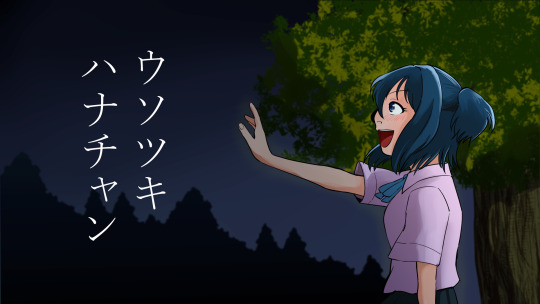
転校生のハナちゃんはいつも嘘を話してクラスを騒がせるトラブルメーカー。
だけどあなたたちは揃いも揃って、ハナちゃんのことが好きでした。
「真実の世界ってなにかって? そんなの私も行ってみないとわからないわ」
インターネットで公開したセッションを大幅にパワーアップして登場。
プレイ人数:2~4人
シナリオ傾向:半シティ
所要時間:ボイスセッションで2時間半~3時間半程度
事前開示情報:あなたたちは全員転校生の少女「早田ハナ」に好意を持っている。あなたたちは突飛な嘘をつくハナちゃんの嘘を真実にするべく奔走する��とになる。
♦シナリオブック『アルミホイル少女』のここがオススメ!
・初心者でも回しやすいような内容
・セッション中の楽しさを重視したシナリオ
・シナリオの軸となる4人の少女が可愛い!
・配信者が作ったシナリオなのでセッション配信許可いらず!
♦値段
コミックマーケット101
1日目 東2 R27b
たけたけオチャドゾーズ にて頒布開始
会場価格 86P/500円
電子版 600円(booth)
♦購入特典
・シナリオPDFファイル
・シナリオテキストファイル
・オンラインセッション素材
・テストセッション限定公開動画
・その他(たけたけオチャドゾーズ漫画ネームなど)
♦クレジット
・制作
たけたけオチャドゾーズ
・シナリオ
『アルミホイル少女』 『ウソツキサキチャン』犬麻宮ミヤネ/いぬまみや(@21mamiya/@inu_no_gohan)
『タオちゃんはVtuberを閉じ込めたい』『ウソツキハナチャン』たけっちノームコア(@UstTakecchi9)
・イラスト寄稿等
ハムスター王国 表紙、アルミホイル少女、ウソツキサキチャン、その他デザイン全般
のわっち タオちゃんはVtuberを閉じ込めたい
うろ ウソツキハナチャン
その他 ラジアン13
黒瀬ぼん ゲスト寄稿
◆注意事項
※本シナリオに含まれる全てのデータを、本シナリオと無関係な用途に使用することはできません。
※データの再配布等は禁止してます。
※リプレイ制作やプレイ動画のアップロードは自由です。むしろ推奨してます。
※改変なども基本的に自由ですが、自作発言など面倒な行為はやめてください。常識的な範囲でお互い楽しみましょう。
※質問や感想があればそれぞれの制作者のTwitterや配信でチャットなどしてください。
◆権利表示
本作は、「 株式会社アークライト 」及び「株式会社KADOKAWA」が権利を有する『クトゥルフ神話TRPG』の二次創作物です。
Call of Cthulhu is copyright ©1981,2015, 2019 by Chaosium Inc. ;all rights reserved. Arranged by Arclight Inc.Call of Cthulhu is a registered trademark of Chaosium Inc. PUBLISHED BY KADOKAWA CORPORATION 「クトゥルフ神話TRPG」
2 notes
·
View notes
